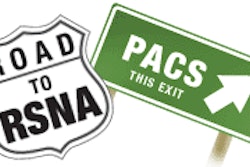Image compression with 3D JPEG 2000 yields consistently higher image quality in multislice CT datasets than 2D JPEG 2000 compression, according to a research team from VA Maryland Health Care System in Baltimore and Siemens Corporate Research in Princeton, NJ.
"3D JPEG 2000 compression offers advantages over 2D JPEG 2000, specifically for thinner slices and higher compression ratios," said Jeffrey Johnson, Ph.D., of Siemens Corporate Research. He presented the team's findings at the 2004 RSNA meeting in Chicago.
Intelligent and judicious use of irreversible and scalable compression in CT can expedite data transfer and enable real-time visualization applications, which face the challenge of managing the growing amounts of CT data and routine use of submillimeter image reconstruction, Johnson said.
While JPEG 2000 is being increasingly used in medical image compression, the researchers believed that volumetric data might be compressed more efficiently using 3D methods. To compare the performance of 2D JPEG 2000 and 3D JPEG 2000 (part 2), the researchers obtained five thoracic CT datasets using a 16-detector scanner with a collimation of 0.75 mm (kVp 120, mAs 90). The data were reconstructed at various slice thicknesses: 0.75 mm, 1.5 mm, 3 mm, 6 mm, and 10 mm.
Both 2D and 3D JPEG 2000 compression were applied to the datasets at ratios of 4:1, 6:1, 8:1, 12:1, 16:1, 32:1, and 64:1. The study team then assessed the effect of compression at mediastinal (350/50) and lung (1500/-600), specifically assessing the window and center settings. Next, image quality was measured utilizing the peak signal-to-noise ratio (PSNR) and the Sarnoff JNDmetrix visual discrimination model (VDM).
In most cases, 3D JPEG 2000 compression produced higher image quality, via lower JND and higher PSNR values compared with 2D compression at the same ratios, Johnson said. In contrast with 2D JPEG 2000, 3D compression of 0.75-mm slices produced an image quality that was comparable to that of 10-mm slices at all compression levels, he said.
The researchers found the reduction in image distortion between the 2D compression technique and 3D compression for 0.75-mm slices at ratios of 8:1 and 16:1 was 0.5 and 1.0 JND, respectively, or 1 to 3 dB in PSNR.
"The advantage of going to 3D compression increased as the slices became thinner, and as we went to higher levels of compression," he said. "Compressibility definitely decreased for thinner slices using 2D compression, and in fact, we found that the data size increased faster than linear with the number of slices for the same distortion level."
Compression with 3D JPEG 2000 offers advantages over 2D JPEG 2000, offering either better image quality at different compression ratios or comparable image quality at higher ratios, Johnson concluded.
"The adoption of 3D JPEG 2000 compression standards, both part 2 and the part 10 that's in development, by the medical imaging community and vendors is likely to improve compression of the large datasets that are coming out of the latest scanners," Johnson said.
The team is planning additional studies on the topic, including receiver operator characteristics (ROC) observer studies, for additional validation of the research.
By Erik L. Ridley
AuntMinnie.com staff writer
February 9, 2005
Related Reading
Web-based application nets teleradiology benefits, January 31, 2005
In-depth approach needed for PACS security, January 20, 2005
PACS protects during SARS outbreak, January 7, 2005
ASP-powered PACS can slash costs, December 17, 2004
Patient identification aided by picture wristbands, December 2, 2004
Copyright © 2005 AuntMinnie.com




















